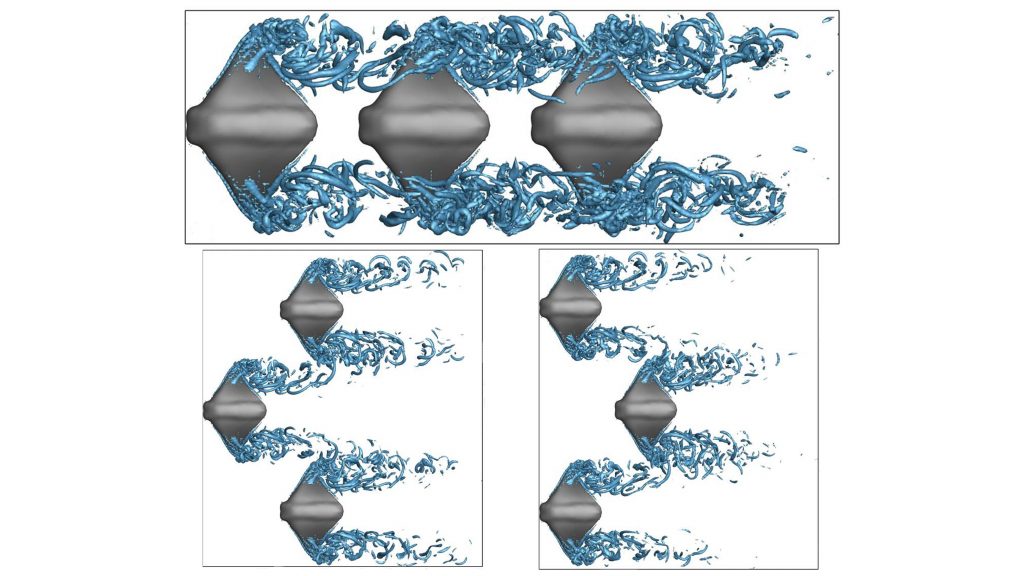Studying how group dynamics affect manta rays’ propulsion can help inform underwater vehicle operations
From the Journal: Physics of Fluids

WASHINGTON, May 6, 2025 – From bird flocking to fish schooling, many biological systems exhibit some type of collective motion, often to improve performance and conserve energy. Compared to other swimmers, manta rays are particularly efficient, and their large aspect ratio is useful for creating large lift compared to drag. These properties make their collective motion especially relevant to complex underwater operations.
To understand how their group dynamics affect their propulsion, researchers from Northwestern Polytechnical University (NPU) and the Ningbo Institute of NPU, in China, modeled the motions of groups of manta rays, which they present in Physics of Fluids, by AIP Publishing.
“As underwater operation tasks become more complex and often require multiple underwater vehicles to carry out group operations, it is necessary to take inspiration from the group swimming of organisms to guide formations of underwater vehicles,” said author Pengcheng Gao. “Both the shape of manta rays and their propulsive performance are of great value for biomimicry.”
Based on photographs of real manta ray configurations, the researchers studied different formations of three manta rays: in tandem, in a triangular setup with one manta ray in front leading two behind, and in an inverse triangular configuration with one manta ray trailing the other two.
They found the tandem formation only significantly increases propulsion for the middle manta ray, whose performance directly determines the performance of the entire group. The two triangular setups both result in overall decreased efficiency compared to a single swimmer on its own. These findings can help optimize formations for underwater vehicle operations.
“The tandem formation and the triangular formation are the formations that manta rays often use during group swimming,” said Gao. “This biological information also supports the idea that a small group of three individuals can be used as a basic unit for more complex group swimming.”
In nature, manta rays swim in numbers ranging from pairs all the way up to swarms of thousands. However, previous studies have only considered manta rays in pairs or on their own. Because Gao and the team expanded the study into a unit of three, their findings can be extended into a larger number of swimmers by considering larger groups to be composites of those modeled in the paper.
“Future research should focus on the performance of group swimming under the coupling of multiple factors, such as formations, spacing, and motion differences, in addition to considering the combination of deep learning algorithms to achieve active control of the motion parameters of the individual in the group,” said Gao.
###
Article Title
Formation effects on the group propulsion performance of manta rays
Authors
Pengcheng Gao, Qiaogao Huang, Guang Pan, Yong Chu, and Jingyi Bai
Author Affiliations
Northwestern Polytechnical University, Ningbo Institute of Northwestern Polytechnical University
